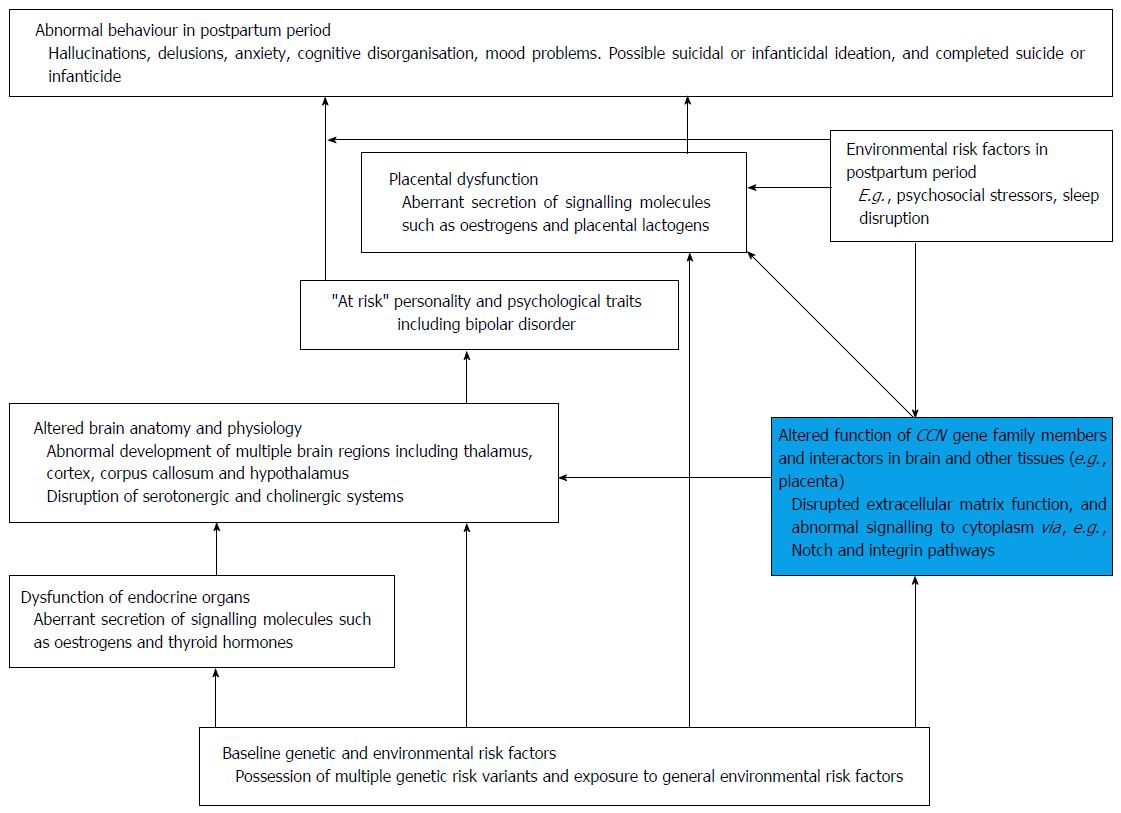Copyright
©The Author(s) 2017.
World J Psychiatr. Jun 22, 2017; 7(2): 77-88
Published online Jun 22, 2017. doi: 10.5498/wjp.v7.i2.77
Published online Jun 22, 2017. doi: 10.5498/wjp.v7.i2.77
Figure 1 A revised model for postpartum psychosis risk.
We suggest that multiple genetic risk variants (potentially influencing STS and CCN family member function), in combination with environmental risk factors, adversely affect the function of multiple endocrine organs (notably placenta and thyroid gland) and increase expression of CCN family members in brain and placenta, to elicit functional changes in brain architecture and neurochemistry which predispose to postpartum psychosis risk. This risk may be further exacerbated by acute environmental risk factors acting within the postpartum such as psychosocial stressors (plausibly also acting via CCN-mediated pathways). Putative and well-characterised protective factors such as smoking and antipsychotic administration respectively could potentially exert their effects via normalisation of CCN family member function.
- Citation: Davies W. Understanding the pathophysiology of postpartum psychosis: Challenges and new approaches. World J Psychiatr 2017; 7(2): 77-88
- URL: https://www.wjgnet.com/2220-3206/full/v7/i2/77.htm
- DOI: https://dx.doi.org/10.5498/wjp.v7.i2.77









